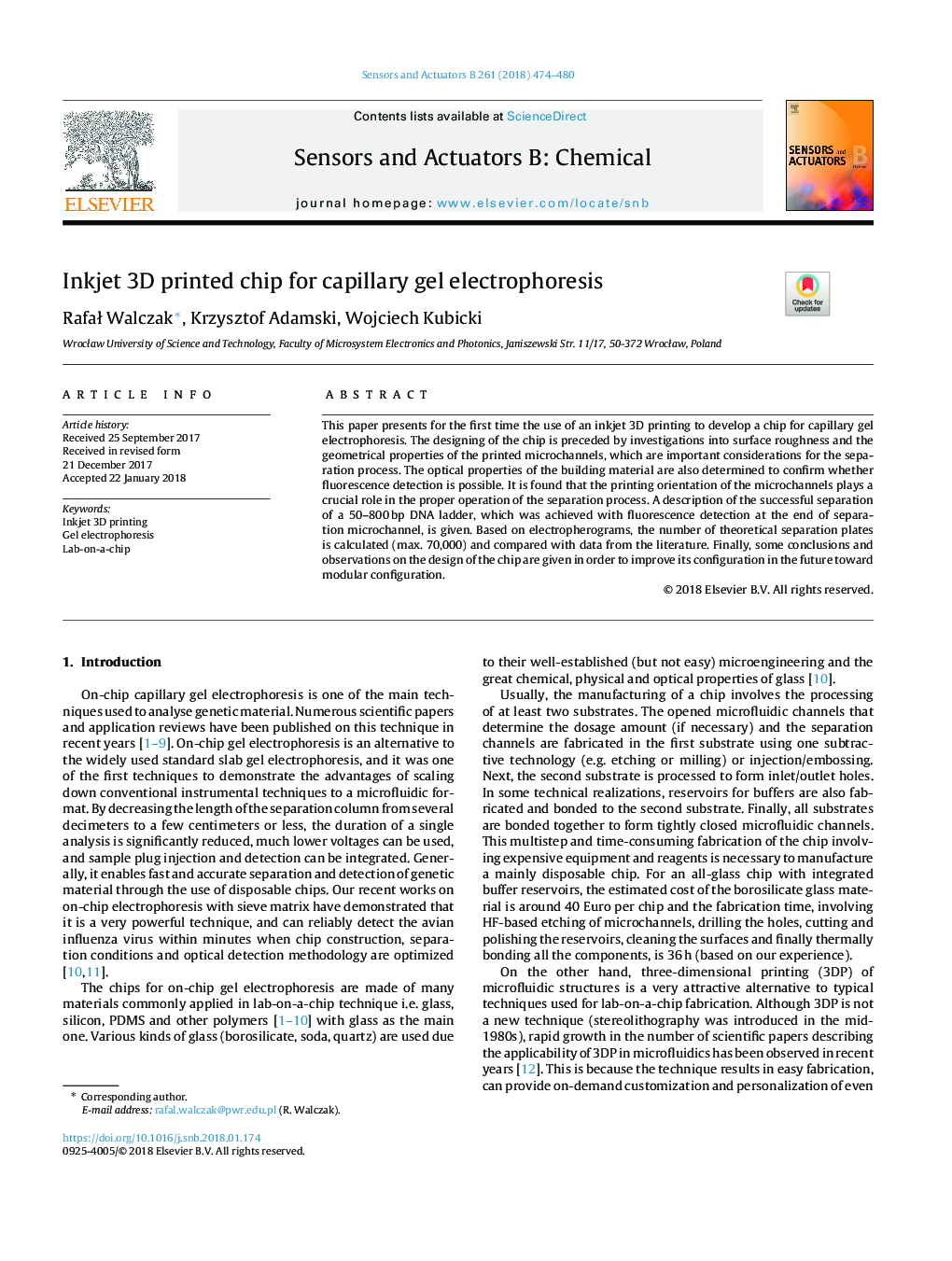| Article ID | Journal | Published Year | Pages | File Type |
|---|---|---|---|---|
| 7140745 | Sensors and Actuators B: Chemical | 2018 | 7 Pages |
Abstract
This paper presents for the first time the use of an inkjet 3D printing to develop a chip for capillary gel electrophoresis. The designing of the chip is preceded by investigations into surface roughness and the geometrical properties of the printed microchannels, which are important considerations for the separation process. The optical properties of the building material are also determined to confirm whether fluorescence detection is possible. It is found that the printing orientation of the microchannels plays a crucial role in the proper operation of the separation process. A description of the successful separation of a 50-800â¯bp DNA ladder, which was achieved with fluorescence detection at the end of separation microchannel, is given. Based on electropherograms, the number of theoretical separation plates is calculated (max. 70,000) and compared with data from the literature. Finally, some conclusions and observations on the design of the chip are given in order to improve its configuration in the future toward modular configuration.
Keywords
Related Topics
Physical Sciences and Engineering
Chemistry
Analytical Chemistry
Authors
RafaÅ Walczak, Krzysztof Adamski, Wojciech Kubicki,
